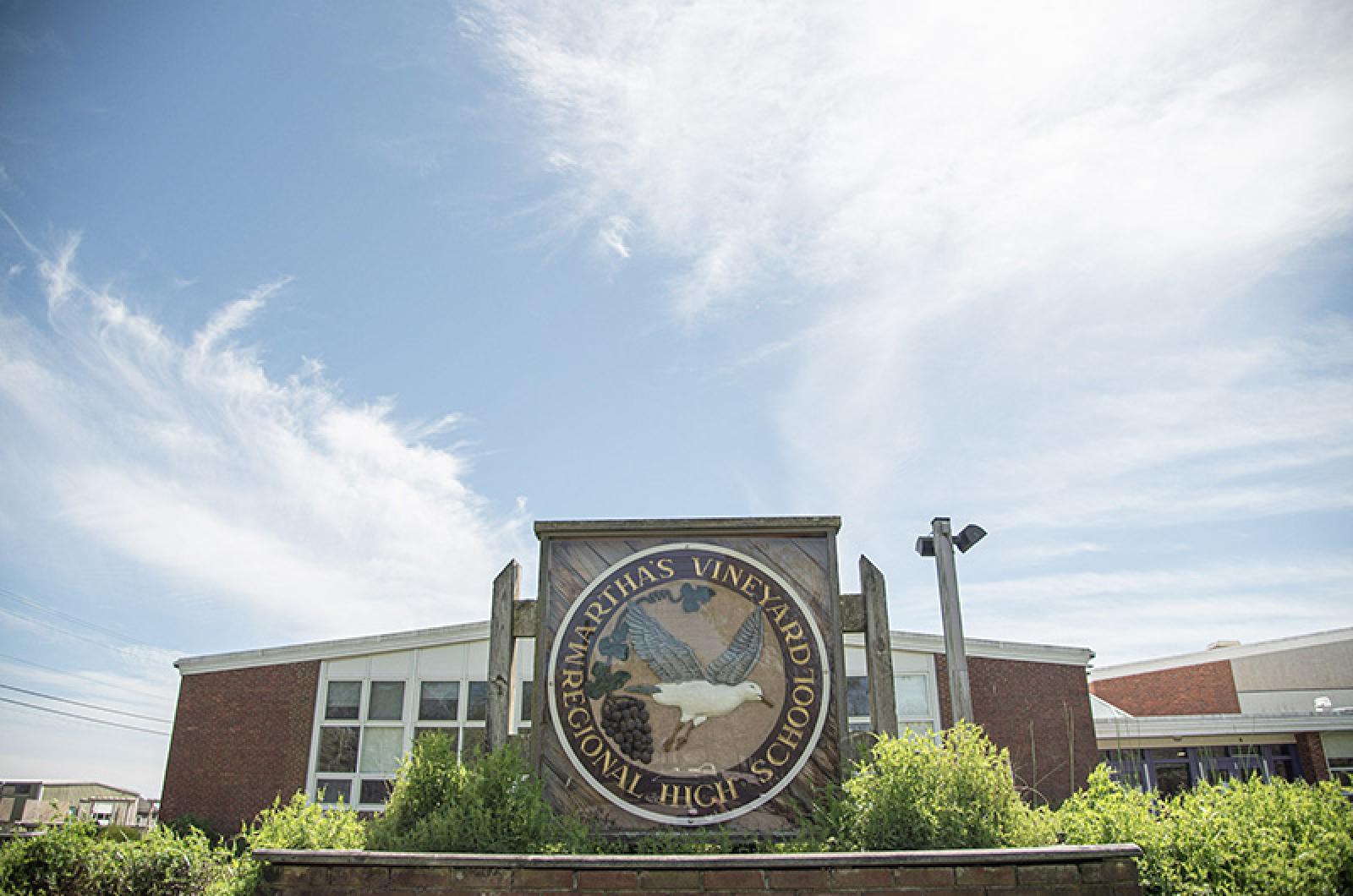The all-Island committee voted Thursday to authorize a new school-wide testing plan, unanimously backing a draft of the program while deferring the question of funding to local district committees.
Plans for a school-wide testing program have been in the works since late in the summer, when Dr. Jeffrey Zack, an Island emergency room physician and medical advisor on school re-opening plans, first raised the idea. Months later, in early October, the committee scrapped Dr. Zack’s plan, citing concerns over the inefficacy of the test type as well as a sizable price tag for the program.
Since then, a school-appointed testing task force — composed of Island health agents, medical experts and school committee members — has worked to develop a new testing program guided by input from infectious disease experts Dr. Michael Stoto and Dr. Benjamin Miller. The task force has also looked to other commonwealth school districts, including the Wellesley and Somerville public schools, who have adopted testing regimens.
On Thursday, Dr. Stoto and Dr. Miller came before the committee to present their recommendation for a school-wide program.
Based on the Island’s low virus rates, the doctors recommended the use of surveillance testing, which tests only a portion of the population in order to intercept outbreaks. With surveillance testing, the schools could track when case-loads rise from a state-designated green level — 1.1 cases per 100,000 — to higher yellow and red levels. The recommendation marks a shift from Dr. Zack’s original plan, which advocated for more aggressive school-wide testing.
The doctors recommended the use of SalivaClear, a spit-sample PCR test produced by Mirimus Clinical Labs. The test is both highly sensitive and specific, meaning its false positive and negative rates are relatively low, with a rapid return time of 12-24 hours, doctors said.
Under the proposed plan, the school would use a pool-testing approach to test a total of 600 people per week. Elementary school staff and students would be tested on alternating weeks while the high school would be tested weekly.
Testing frequency can be adjusted, doctors said, and the total cost for 32 weeks would be $305,280, plus additional administration costs and implementation measures that have yet to be determined.
“Based on the recommendations of trying to balance surveillance power, the ability to detect cases of illness and therefore potential outbreaks within the school population, we felt like Plan B, 600 tests a week, was a good balance,” said Dr. Miller.
In the meeting, committee member Alex Salop requested on behalf of the testing task force that the committee authorize the plan in three parts — its methodology, participation requirements and funding. The plan was already approved by the health and safety subcommittee and many board of health members, he said.
With little commentary, the committee unanimously authorized the plan’s methodology, backing the proposal 13-0.
Regarding the question of participation, Mr. Salop moved to mandate testing for all students and staff, noting that those who do not consent will not be granted entry into the building and will instead be incorporated into fully remote learning.
The committee voiced general support for requiring student testing, but some, including committee member Kate DeVane, voiced concern over mandating testing for staff, citing the complications it would pose to the school’s memorandum of agreement with the teacher’s unions.
“I actually think this is going to present a really complex piece with the bargaining to put a cap on if people refuse testing, they can’t come into the building,” said Ms. DeVane. “I would not reference the faculty until we’ve talked to them about it.”
But others, including Anne Davey, co-president of the Martha’s Vineyard Educators Association, pushed back, citing teacher support for a testing plan.
“We have just recently done a survey with staff and the staff is overwhelmingly in favor of testing. So we are very eager to discuss it,” said Ms. Davey.
Nina Shirley, a third-grade teacher at the Tisbury School, echoed Ms. Davey’s statement.
But with concerns over the bargaining, school superintendent Matthew D’Andrea amended the motion to require the school to engage in bargaining before mandating testing.
The amended motion received unanimous backing from the committee, with a 13-0 vote.
For the funding piece of the plan, Mr. Salop said that the local schools have already set aside a combined $150,000 — nearly half of the program cost — for testing. The rest will likely come from benefactors who have expressed interest, he said.
Funding from each district will be approved at local meetings this week, the committee agreed.
In other business Thursday, the committee heard updates from assistant superintendent Richard Smith on the district’s ongoing racial justice work through the Culturally Responsive Practice Leadership Academy.
The school was recently accepted into the two-year institute and has since begun attending workshops focused on implementing short and long-term anti-racist work at the schools. So far, the school has begun new racial-justice oriented groups and plans to take a longer-term look at curriculum reform.
Mr. Smith also stressed the importance of community engagement, exhorting committee members to join the institute’s Community Diversity Coalition.
“We want to make sure that this is embedded firmly,” Mr. Smith said. “Basically [we want to] institutionalize our practices to eradicate racism.”
Also Thursday, the committee established a two-member budget working group consisting of Robert Lionette and Skipper Manter, to expedite the budget building process for FY22. Mr. Lionette said he hopes to recruit at least one more member as they begin planning.







Comments
Comment policy »